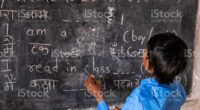Class 8 Math Playing with Numbers Notes
Playing with Numbers – Class 8
Hi everyone! This chapter is all about Playing with Numbers. We’ll explore some fun puzzles and games that involve numbers and logic.
1. Divisibility Rules
Divisibility rules are shortcuts to determine if a number is divisible by another number without actually performing the division.
| Divisible by | Rule | Example |
|---|---|---|
| 2 | The number ends in 0, 2, 4, 6, or 8. | 124 is divisible by 2. |
| 3 | The sum of the digits is divisible by 3. | 123 (1+2+3=6, which is divisible by 3) is divisible by 3. |
| 4 | The last two digits are divisible by 4. | 324 (24 is divisible by 4) is divisible by 4. |
| 5 | The number ends in 0 or 5. | 235 is divisible by 5. |
| 6 | The number is divisible by both 2 and 3. | 432 is divisible by 6. |
| 8 | The last three digits are divisible by 8. | 1024 (024 is divisible by 8) is divisible by 8. |
| 9 | The sum of the digits is divisible by 9. | 531 (5+3+1=9) is divisible by 9. |
| 10 | The number ends in 0. | 450 is divisible by 10. |
| 11 | The difference between the sum of digits at odd places and the sum of digits at even places is either 0 or divisible by 11. | 1331 (1+3 – 3+1 = 0) is divisible by 11. |
Example: Is 2346 divisible by 6? Yes, because it’s divisible by both 2 (ends in 6) and 3 (2+3+4+6=15, which is divisible by 3).
2. Finding the HCF (Highest Common Factor)
The HCF of two or more numbers is the largest number that divides each of the numbers exactly.
Example: The HCF of 12 and 18 is 6.
3. Finding the LCM (Least Common Multiple)
The LCM of two or more numbers is the smallest number that is exactly divisible by each of the numbers.
Example: The LCM of 12 and 18 is 36.
4. Perfect Squares and Cubes
A perfect square is a number that can be obtained by squaring an integer (e.g., 9 is a perfect square because 3² = 9). A perfect cube is a number that can be obtained by cubing an integer (e.g., 8 is a perfect cube because 2³ = 8).
Example: Is 144 a perfect square? Yes, because 12 * 12 = 144.
5. Number Puzzles
Number puzzles involve using logic and mathematical reasoning to solve problems related to numbers. These can involve finding missing digits, arranging numbers in a specific order, or following certain rules.
Example: Find a two-digit number that is divisible by both 3 and 5, and whose digits add up to 8. (Answer: 35)
Applications of Playing with Numbers
1. Problem Solving:
These skills help improve logical thinking and problem-solving abilities.
2. Mental Math:
Divisibility rules and other number tricks can help perform mental calculations quickly.
3. Coding and Cryptography:
Number theory concepts are used in computer science and cryptography.
Playing with numbers is a fun way to learn about mathematical concepts and improve your logical thinking!
Playing with Numbers Quiz – Tough Application Problems
1. **Divisibility Challenge:** A number is divisible by both 9 and 10. It is also a three-digit number greater than 500. What is the smallest such number?
2. **HCF and LCM Puzzle:** The HCF of two numbers is 12, and their LCM is 240. If one of the numbers is 36, what is the other number?
3. **Perfect Square Riddle:** A number is a perfect square and is also divisible by 3 and 5. It is a three-digit number. What is the smallest such number?
4. **Number Game:** I am a two-digit number. The sum of my digits is 9. If you reverse my digits, the new number is 27 less than me. What number am I?
5. **Divisibility by 11:** Is the number 45678912 divisible by 11? Explain your reasoning.
6. **Consecutive Numbers:** The sum of three consecutive even numbers is 78. What are the numbers?
7. **Multiples and Factors:** How many factors does the number 72 have?
8. **Digit Puzzle:** In a two-digit number, the digit at the tens place is twice the digit at the units place. If the digits are reversed, the number is decreased by 36. Find the number.
9. **LCM Application:** Three bells ring at intervals of 12 minutes, 15 minutes, and 18 minutes. After how many minutes will they ring together again?
10. **Perfect Cube Challenge:** Is 1728 a perfect cube? If yes, what is its cube root?


